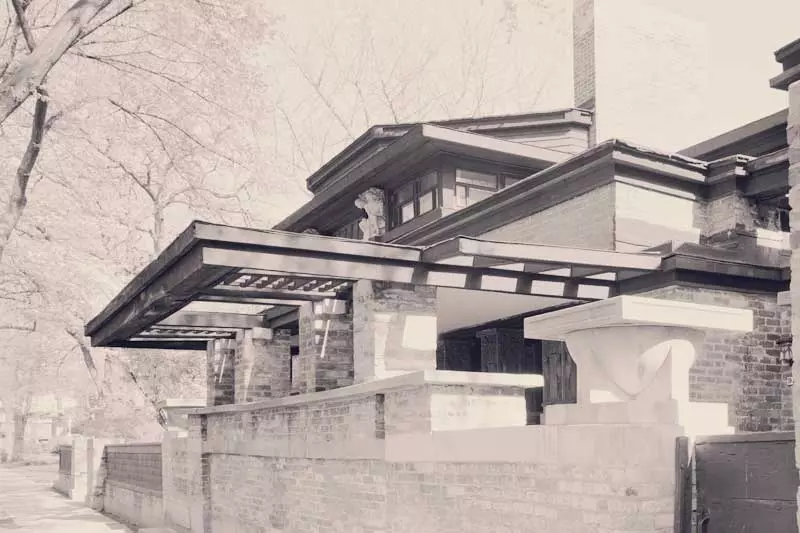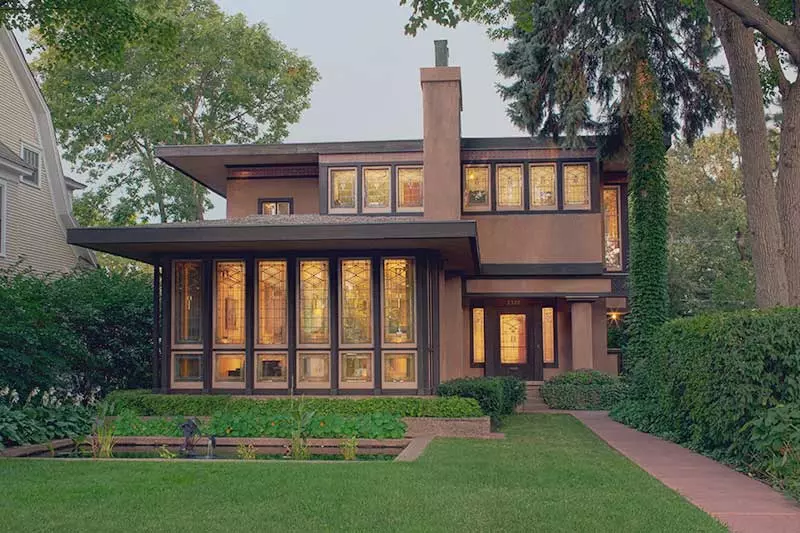If there's one thing that sets America apart, it's the stunning variety of architectural styles found throughout the country. From the Southern porches to the Pueblo Revival homes and Craftsman bungalows, each region boasts its own unique charm. One such style that captured my attention is the Prairie Style, which flourished from 1900 to 1915. So let's dive into the world of the Prairie Style and discover its captivating allure.
The Essence of the Prairie Style
The Prairie Style is classified as a sub-style of the larger Arts and Crafts ("Craftsman") style architecture. It's also known as Prairie School Architecture, and its name derives from the vast, flat landscapes of the Midwest prairie. Just like the prairie itself, this architectural style emphasizes wide, horizontal lines, creating a sense of openness and harmony with nature.
Frank Lloyd Wright: The Master of the Prairie Style
No discussion of the Prairie Style would be complete without mentioning the legendary architect Frank Lloyd Wright. His 1901 masterpiece, the Willits House in Highland Park, Illinois, was one of the first iconic examples of this style. Wright's genius lies in his ability to blend high-tech elements with a craftsman's sensitivity to form and materials. The result is a seamless integration of the house with its surroundings, giving it a tranquil and sheltering feel.
Key Elements of the Prairie Style
According to Wright, the quintessential features of the Prairie Style are low roofs, spreading soffits, continuous window bands, and the use of stratified materials. These elements work together to create a harmonious and organic design that reflects America's democratic spirit and distinctive landscapes.

The Influence of Frank Lloyd Wright
Wright's innovative approach to architecture inspired a whole generation of builders and architects. Many of his former students and associates went on to spread the Prairie Style throughout the Midwest, particularly in Minnesota, Iowa, and Wisconsin. Names like George W. Maher, Robert C. Spencer, Jr., and Walter Burley Griffin became synonymous with this architectural movement.
Discovering the Prairie Style
During my exploration of the Prairie Style, I had the pleasure of visiting some remarkable examples of this architectural gem. One such treasure is the Edna S. Purcell House in Minneapolis, designed by Purcell and Elmslie in 1913. This stunning two-story house features flat roofs, long eaves, and expansive stained glass windows. Its elegance and charm stand as a testament to the genius of Prairie architects.

Preserving the Legacy
While many Prairie Style homes have fallen into disrepair, they still possess a unique historical integrity that deserves our attention and care. The Stewart Memorial Presbyterian Church in Minneapolis, designed in 1910 by Purcell and Feick, is one such example. Modeled after Wright's Unity Temple, this brown-brick church stands as a testament to the architectural genius of the Prairie Style.

Frank Lloyd Wright's Enduring Influence
Throughout his career, Frank Lloyd Wright remained committed to the principles of the Prairie Style. From his concrete block houses to his city skyscrapers and Usonian houses, his designs reflected simplicity, open plans, and a respect for natural materials. For Wright, the house was not just a structure but a sanctuary within nature, seamlessly blending the interior and exterior.

Embracing the Prairie Style
The Prairie Style remains a testament to America's unique architectural heritage. Its influence is still visible in the houses that dot our neighborhoods, reflecting a rich legacy that seamlessly marries form and function. So, the next time you come across a Prairie Style home, take a moment to appreciate the harmonious and democratic spirit it represents.
Author Hänsel Hernández-Navarro is an architectural conservator who specializes in preserving and rehabilitating historic buildings. With his expertise, we can continue to celebrate and cherish the beauty of architectural styles like the Prairie Style.

















